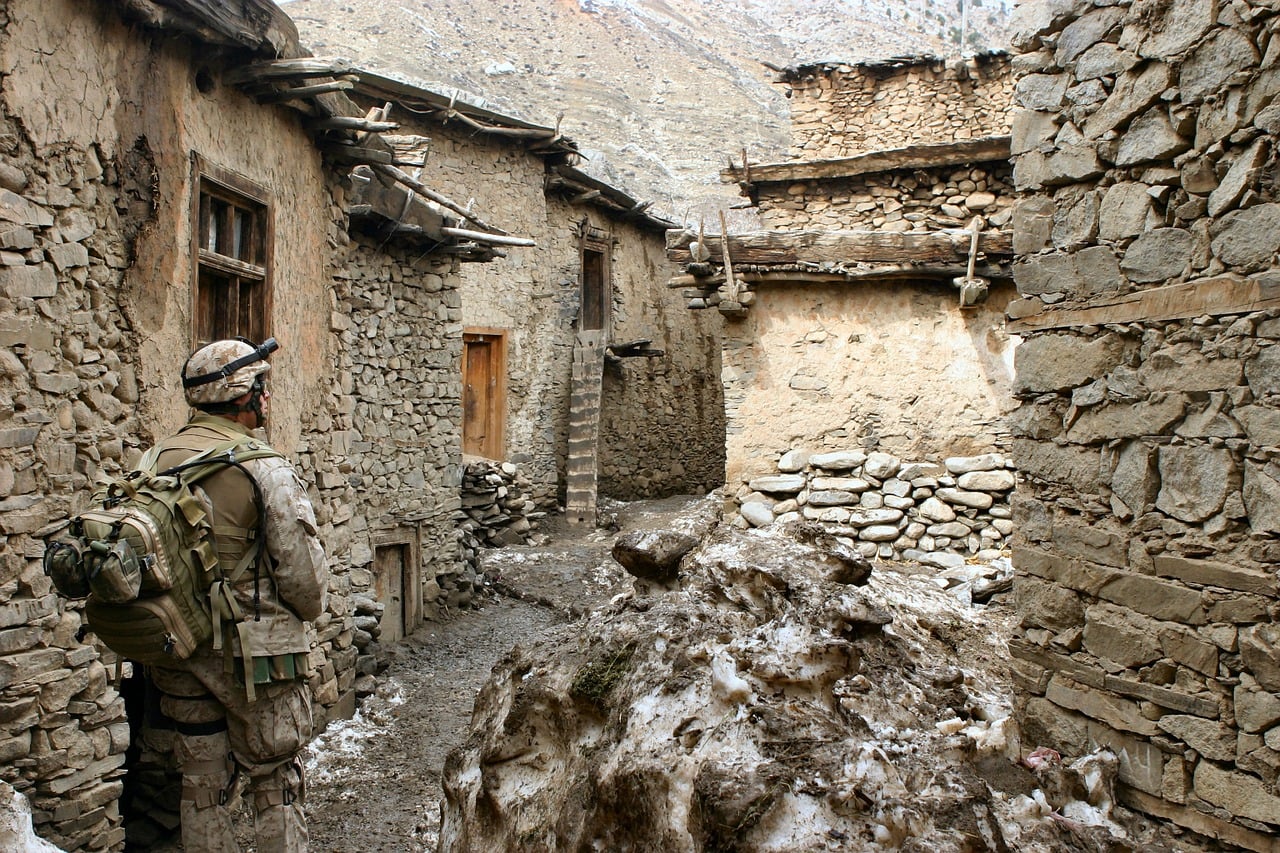According to the research compiled by Dutch journalist Bette Dam in her new book Searching for an Enemy, Taliban founder an ex-leader Mullah Mohammed Omar was living only three miles from a United States Forward Operating Base (FOB) known as Wolverine was said to house over 1,000 troops including US Navy Seals and British Special Air Service (SAS) in Zabul, Afghanistan at the time of his death.
Shortly after reports of his death began to emerge from the Zomia Center a research group based in New York on Monday, the Taliban released images of the simple house they claim served as the hideout for Mullah Omar during his final days.
While the militant organization claim he died in 2013 within Afghanistan after refusing treatment in a foreign country, the Afghan government claimed the Zomia research was ‘delusional,’ and the former Taliban leader died in Pakistan — whom they claim harbor and protect the terrorist cell.
Who Was Mullah Omar?
Much like former al-Qaeda leader Osama bin Laden, Mohammed Omar rose to prominence from the US, UK, and Pakistan supported Mujahedeen group in Afghanistan who battled the Soviet Union in the 1980s. Britannica outlines the founding of the Taliban by Mullah Omar:
Taliban, Pashto Ṭālebān (“Students”), also spelled Taleban, ultraconservative political and religious faction that emerged in Afghanistan in the mid-1990s following the withdrawal of Soviet troops, the collapse of Afghanistan’s communist regime, and the subsequent breakdown in civil order. The faction took its name from its membership, which consisted largely of students trained in madrasahs (Islamic religious schools) that had been established for Afghan refugees in the 1980s in northern Pakistan.
During her five-year research process, Dam was able to interview Jabbar Omari, who hid and protected Mullah Omar following the Taliban regime being overthrown in Afghanistan. After the 9/11 terror attacks, Mullah Omar and Omari disappeared into hiding inside of a small compound in Qalat, without the family living there ever knowing the identity of Omar, due to fear of them cashing in on the $10 million bounty placed on Mullah Omar. US forces nearly captured him twice during this period.
“At one point, a US patrol approached as Omar and Omari were in the courtyard. Alarmed, the two men ducked behind a wood pile, but the soldiers passed without entering,” News 18 begins detailing. “A second time, US troops even searched the house but did not uncover the concealed entrance to his secret room. It was not clear if the search was the result of a routine patrol or a tip-off.”
Also according to Dam’s research Mullah Omar would often speak to Omari and his cook — using an old Nokia cell phone without a sim card to record himself chanting verses from the Koran.
What Does This Information Mean?
The research completed by Dam provides insight on how bleak the lives of terrorists are. Al-Qaeda and the Taliban may have mostly been defeated, the details provided may create difficulty in other militant organizations from recruiting domestic and international troops. The Islamic State of Iraq and the Levant (ISIL) often attempted to recruit foreign sympathizers prior to losing the majority of their strongholds, therefore creating a precedent for the strategy.
Military Intelligence outfits around the world may also look to Dam’s book as a way to buffer their efforts in combating terrorist activity around the world. However, providing positive infrastructure and building the communities terrorists often attempt to recruit from may provide the best strategy in deterring the spread of terror around the world. Hopefully the information in the book can be put to positive use and help bring an end to cycles of terror on the international scene.




